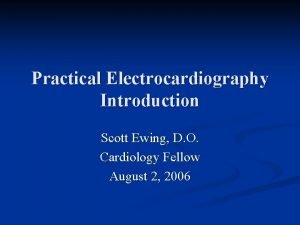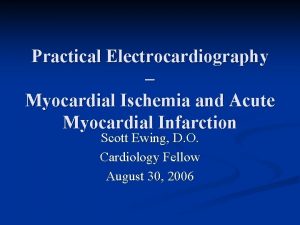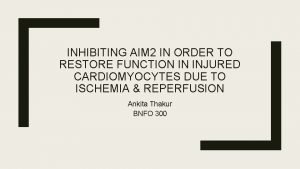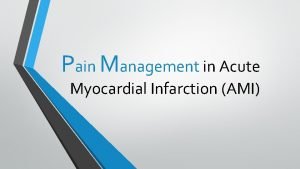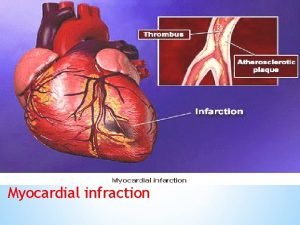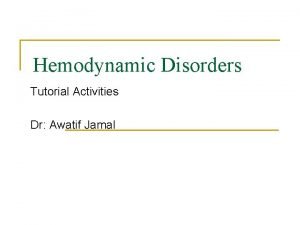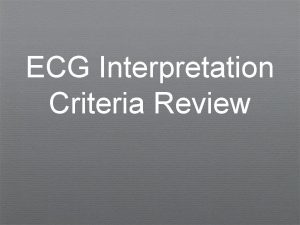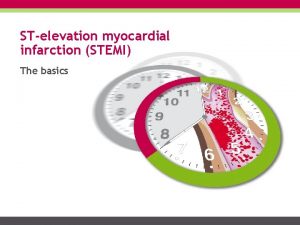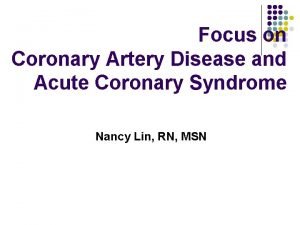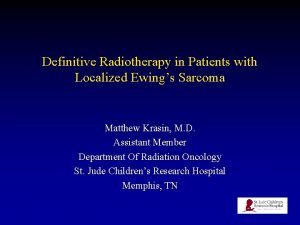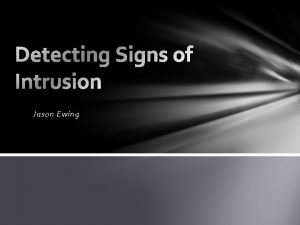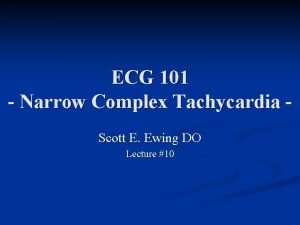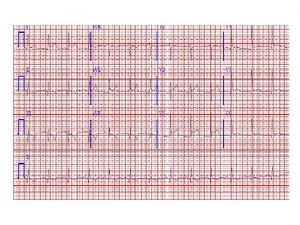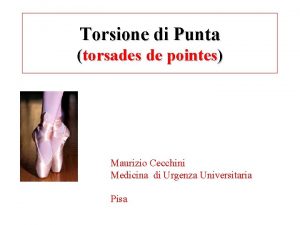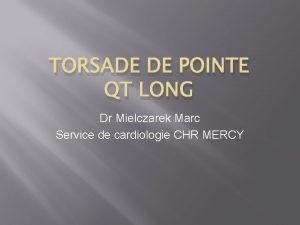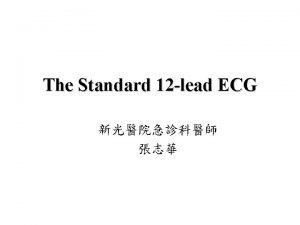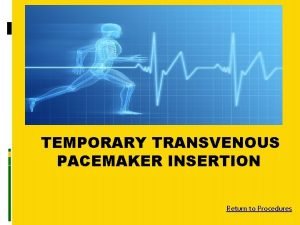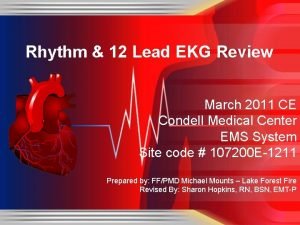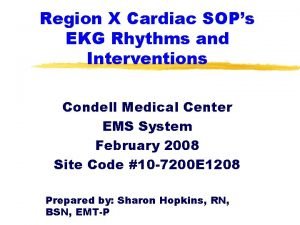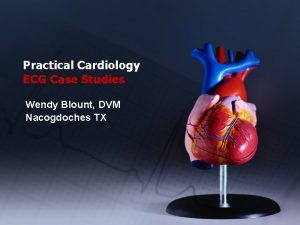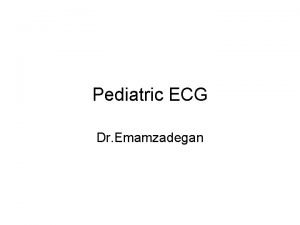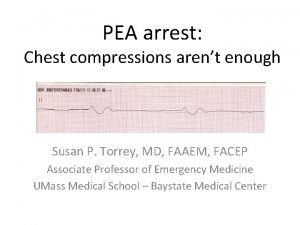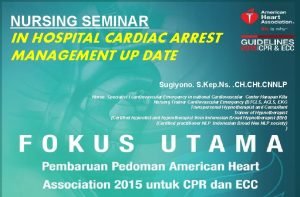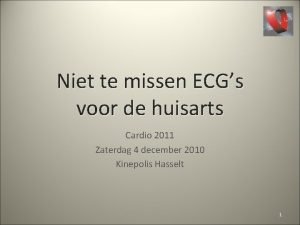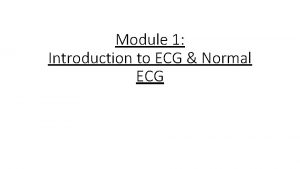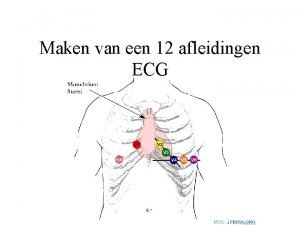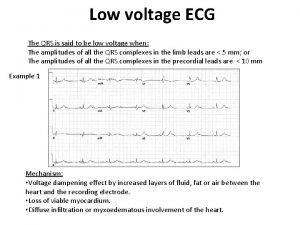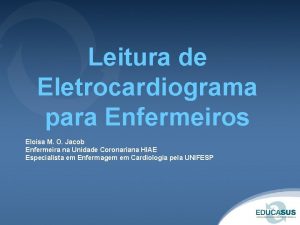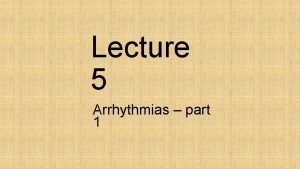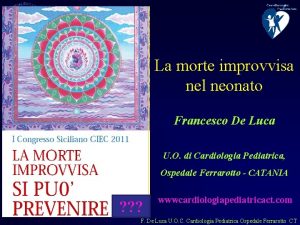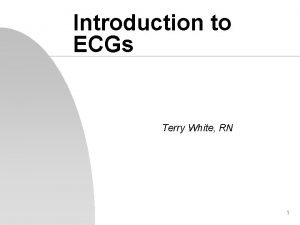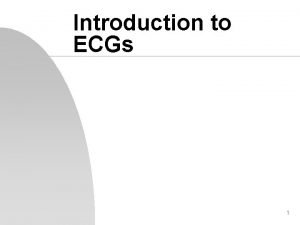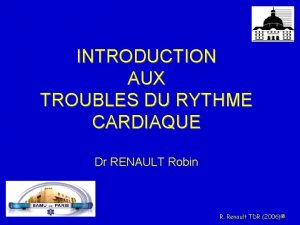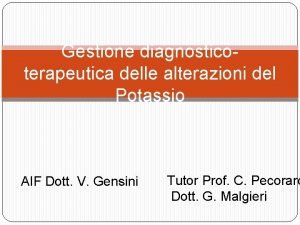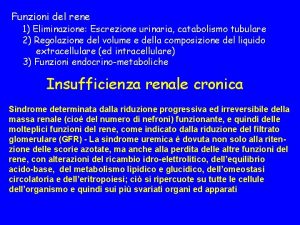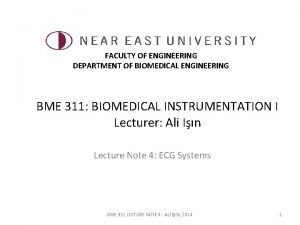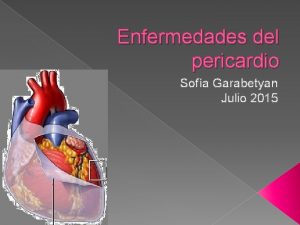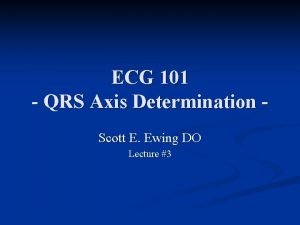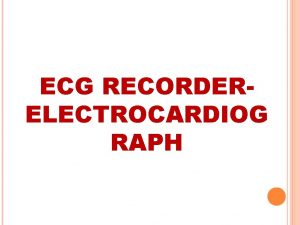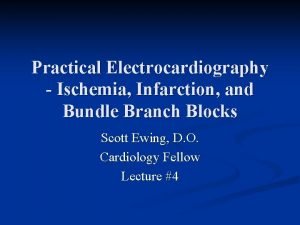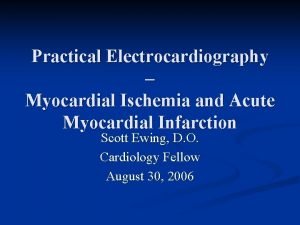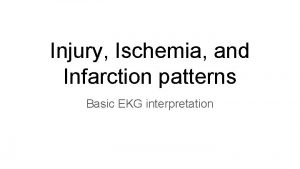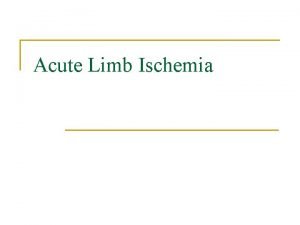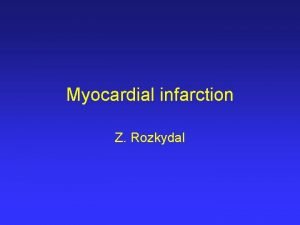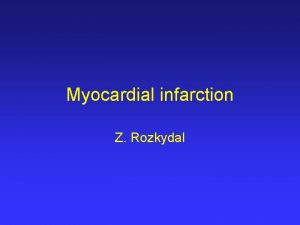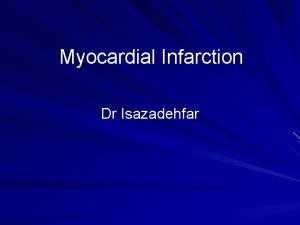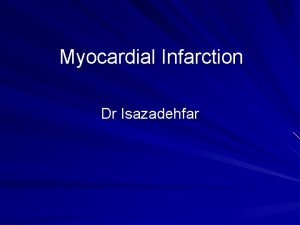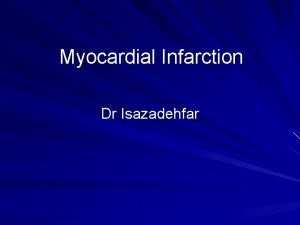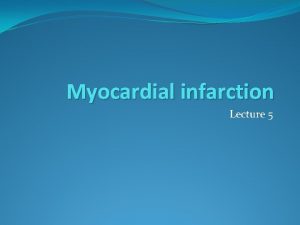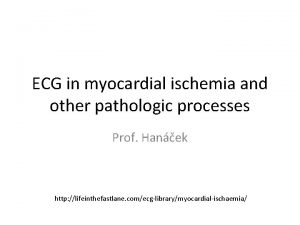ECG 101 Ischemia and Infarction Scott E Ewing





















































- Slides: 53

ECG 101 - Ischemia and Infarction Scott E. Ewing DO Lecture #7

Review Heart Physiology n Depolarization n ECG Frontal Plane n Rate n Rhythm n QRS Axis n

Heart Physiology: Sequence of Excitation Figure 17. 14 a

Einthoven’s Electrocardiograph

Rate

Rhythm Atrial n Junctional n Ventricular n Pacemaker n Last but not least n

QRS Axis (Frontal Plane) n n n Hexaxial diagram Lead axis designated by angular position relative to lead I (0°) Mean QRS electrical axis measured with respect to this display

Acute Ischemia and Infarction


Current-of-Injury Patterns With Acute Ischemia / Infarction A. B. Resultant ST vector is directed toward the inner layer of the affected ventricle and the ventricular cavity. Overlying leads therefore record ST depression ST vector is directed outward with overlying leads recording ST elevation

Acute Ischemia / NQWMI / NSTEMI Evolving ST-T changes over time without the formation of pathologic Q waves n Evolving ST-T changes may include any of the following patterns: n Convex downward ST segment depression n T wave flattening or inversion n Biphasic T wave changes n Combinations of above changes n

Ischemic T Wave Changes

Ischemic T Wave Inversion

Ischemic Biphasic T Wave Changes

Acute Ischemia - T Wave Changes

Ischemic ST Changes

Acute Ischemia – ST Depression

Acute Ischemia – ST Depression

Acute Ischemia – ST Depression

60 -year-old Male

Anterior Ischemia NSR with ventricular ectopy n LAD consistent with LAFB n T wave inversions in V 2 -V 5 with subtle upward bowing of the ST segments n Symmetric T wave inversions, especially with upward bowing of the ST segments is highly suggestive of LAD ischemia n LHC showed significant LAD (and OM) disease n

Elderly Male

Severe Multivessel Ischemia n n NSR with profound ST segment depression, consistent with severe subendocardial ischemia and probable NQWMI Profound ST depressions of this type usually indicate severe multivessel disease and sometimes LM disease Patient experienced severe CP and was transferred in cardiogenic shock En route, developed refractory PEA, ventricular fibrillation, and died

84 -year-old Female

NQWMI n n NSR with leftward QRS axis (-7°) LVH may be associated with ST-T abnormalities (i. e. "strain pattern"), like those in lead a. VL Prominent horizontal or downsloping ST depressions in other leads (I, II, a. VF, V 5, V 6) strongly suggestive of ischemia superimposed on LVH Patient had positive cardiac enzymes and underwent LHC showing LM and 3 V CAD, followed by CABG

Current-of-Injury Patterns With Acute Ischemia / Infarction A. B. Resultant ST vector is directed toward the inner layer of the affected ventricle and the ventricular cavity. Overlying leads therefore record ST depression ST vector is directed outward with overlying leads recording ST elevation

AMI /STEMI / Q Wave MI n n n n Most acute MI's are located in the LV With proximal RCA occlusion, up to 50% may also have RV infarction as well More leads with MI changes (Q waves and ST elevation), the larger the infarct size and the worse the prognosis LAD and it's branches usually supply the anterior and anterolateral walls of the LV and the anterior two-thirds of the septum LCX and its branches usually supply the posterolateral wall of the LV RCA supplies the RV, the inferior (diaphragmatic) and true posterior walls of the LV, and the posterior third of the septum RCA also gives off the AV nodal coronary artery in 85 -90% of individuals; in the remaining 10 -15%, this artery is a branch of the LCX

Evolution of ECG Changes n n Normal ECG prior to MI Hyperacute T wave changes - increased T wave amplitude and width Marked ST elevation with hyperacute T wave changes (transmural injury) Pathologic Q waves, less ST elevation, terminal T wave inversion (necrosis) n n n Pathologic Q waves duration >0. 04 s or >25% of R-wave amplitude Pathologic Q waves, T wave inversion (necrosis and fibrosis) Pathologic Q waves, upright T waves (fibrosis)

Evolution of ECG Changes

Evolution of ECG Changes

Infarct - ST Elevation

Inferior Infarct – ST Elevation

Old Infarct - Anterior Q Waves

Old Infarct - Inferior Q Waves

Persistent ST Changes

Persistent T Wave Changes

34 -year-old male with chest pain

Acute Anterior MI Acute anterior wall Q wave myocardial infarction n Reciprocal inferior ST depressions n Hyperacute T waves n Distribution of changes is consistent with a proximal LAD occlusion n Confirmed at LHC and treated with PTCA and stenting n

68 -year-old female with chest pain

Acute Anterior MI Note Q waves and loss of R waves V 1 - V 4 n ST elevation in V 2 - V 6 n LAFB is also present, but does not account for the loss of R wave progression n LHC revealed 3 -vessel disease with a 90% mid -LAD "culprit" lesion n

53 -year-old female with chest pain

Acute Lateral MI ST elevations in I and a. VL n Reciprocal ST depressions inferiorly consistent with acute lateral MI n Remember: ST elevations like this are never reciprocal but indicate the primary region of ischemia (diagonal or circumflex lesion) n Confirmed LCX occlusion at LHC n

36 -year-old male with chest pain

Acute Pericarditis n n Always consider myocardial infarction first when you see ST elevations But don't forget the differential diagnosis of ST elevations n n n Ischemic heart disease Pericarditis Left bundle branch block (LBBB) Normal ("early repolarization") variant Two features here point to pericarditis n n First, diffuseness of the ST elevations (I, III, a. VF, V 3 V 6) Second, PR depression in II, a. VF, V 4 -V 6 and PR elevation seen in a. VR (attributed to subepicardial atrial injury)

49 -year-old male with chest pain

Acute Pericarditis n n n Diffuse ST segment elevations (I, II, a. VF, V 2 -V 6) Subtle PR segment deviations (elevated in a. VR and depressed in the inferolateral leads) ST elevations are due to a ventricular current of injury from the pericardial inflammation PR changes are due to an associated atrial current of injury Note that the PR and ST segment vectors point in opposite directions, i. e. , PR up and ST down in a. VR and PR down and ST up in inferolateral leads

Middle aged female with chest pain

Acute Myocardial Infarction n n n Marked infero-lateral ST segment elevation ST segment depression in anterior leads V 1 -V 4 ST elevations (“current of injury” pattern) indicate transmural ischemia of infero-lateral wall ST depression reciprocal change from ST elevation generated by acute posterior and lateral ischemia Remember, acute pericarditis causes diffuse ST segment elevation (e. g. I, III, a. VL, a. VF, and precordial leads) Reciprocal ST depressions of the type here (V 1 -V 4), are never a feature of pericarditis alone

52 -year-old male with chest pain

ST Elevation Myocardial Infarction Slight inferior ST elevation with T wave inversion n Minimal reciprocal ST depression in a. VL n Relatively low limb lead voltage makes these findings more subtle n


Posterior Infarct – ST Elevation!!!

34 Year Old Male With Chest Pain
 Scott ewing md
Scott ewing md Q wave
Q wave Ischemia-guided strategy
Ischemia-guided strategy Normal pr segment
Normal pr segment Myocardial ischemia meaning
Myocardial ischemia meaning Ischemia acuta degli arti
Ischemia acuta degli arti Pico question myocardial infarction
Pico question myocardial infarction Myocardial infarction
Myocardial infarction Gross
Gross Hyperacute t waves
Hyperacute t waves Stemi
Stemi Pancreas wiki
Pancreas wiki Acute pericarditis
Acute pericarditis Lciess
Lciess Ali ewing
Ali ewing Ewing foundation
Ewing foundation Gottron papula
Gottron papula Ewing public schools
Ewing public schools Leah ewing ross
Leah ewing ross Jason ewing
Jason ewing Avnrt
Avnrt 300 method ecg
300 method ecg Types of pathology
Types of pathology Wireless ecg machine project
Wireless ecg machine project Torsione di punta immagini
Torsione di punta immagini Torsade de pointes ecg
Torsade de pointes ecg Einthoven
Einthoven Ecg lead placement
Ecg lead placement 12 lead
12 lead Pea rhythm
Pea rhythm Sick sinus syndrome ecg examples
Sick sinus syndrome ecg examples Failure to sense
Failure to sense Gabbie ecg
Gabbie ecg Signs of myocarditis
Signs of myocarditis Pericarditis vs myocarditis
Pericarditis vs myocarditis Pea causes
Pea causes Gambaran ekg sinus takikardi
Gambaran ekg sinus takikardi Voorkamerflutter
Voorkamerflutter Fibrillatory waves ecg
Fibrillatory waves ecg Ecg aanleggen
Ecg aanleggen Ecg low voltage
Ecg low voltage Traçado aesp ecg
Traçado aesp ecg Ventricular escape rhythm
Ventricular escape rhythm Besv cardiologia
Besv cardiologia 300 150 ecg method
300 150 ecg method Ecg lead placement
Ecg lead placement Tdr ventriculaire
Tdr ventriculaire Punto j en electrocardiograma
Punto j en electrocardiograma Watch?v=0evgft8hgns
Watch?v=0evgft8hgns Q wave
Q wave Alterazioni ecg iperkaliemia
Alterazioni ecg iperkaliemia Iperkaliemia ecg
Iperkaliemia ecg Ecg block diagram
Ecg block diagram Alternancia electrica ecg
Alternancia electrica ecg
